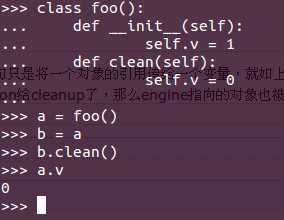标签:des style blog http io os ar 使用 for
上一篇文章简单的实现了ORM(对象关系模型),这一篇文章主要实现简单的MySQL数据库操作。
想要操作数据库,首先要建立一个数据库连接。下面定义一个创建数据库连接的函数,得到一个连接叫做engine。
def create_engine(user,password,database,host=‘127.0.0.1‘,port=3306,**kw):
import mysql.connector
global engine
if engine is not None:
raise DBError(‘Engine is already initialized.‘)
params = dict(user=user,password=password,database=database,host=host,port=port)
defaults = dict(use_unicode=True,charset=‘utf8‘,collation=‘utf8_general_ci‘,autocommit=False)
#print (‘%s %s %s %s %s‘) % (user,password,database,host,port)
for k,v in defaults.iteritems():
params[k] = kw.pop(k,v)
params.update(kw)
params[‘buffered‘] = True
engine = mysql.connector.connect(**params)
cursor = engine.cursor()
有了连接就可以对数据库进行操作了。下面写了几个函数,可以对数据库进行查询和插入操作。
def _select(sql,first,*args):
cursor = None
sql = sql.replace(‘?‘,‘%s‘)
global engine
try:
cursor = engine.cursor()
cursor.execute(sql,args)
if cursor.description:
names = [x[0] for x in cursor.description]
if first:
values = cursor.fetchone()
if not values:
return None
return Dict(names,values)
return [Dict(names,x) for x in cursor.fetchall()]
finally:
if cursor:
cursor.close()
def select_one(sql,*args):
return _select(sql,True,*args)
def select(sql,*args):
return _select(sql,False,*args)
def _update(sql,*args):
cursor = None
global engine
sql = sql.replace(‘?‘,‘%s‘)
print sql
try:
cursor = engine.cursor()
cursor.execute(sql,args)
r = cursor.rowcount
engine.commit()
return r
finally:
if cursor:
cursor.close()
def insert(table,**kw):
cols, args = zip(*kw.iteritems())
sql = ‘insert into %s (%s) values(%s)‘ % (table,‘,‘.join([‘%s‘ % col for col in cols]),‘,‘.join([‘?‘ for i in range(len(cols))]))
print (‘sql %s args %s‘ % (sql, str(args)))
return _update(sql,*args)
到这里,基本的数据库操作已经完成了。但是,根据廖雪峰的教程,这还远远不够。
针对第三个问题,应该使每个连接是每个线程拥有的,其它线程不能访问,使用threading.local。首先定义一个类,来保存数据库的上下文:
class _DbCtx(threading.local):
def __init__(self):
self.connection = None
self.transactions = 0
def is_init(self):
return not self.connection is None
def init(self):
self.connection = engine # 创建数据库连接
self.transactions = 0
def cleanup(self):
self.connection.cleanup()
self.connection = None
def cursor(self):
return self.connection.cursor()
上面的代码有一个错误。因为Python的赋值语句只是将一个对象的引用传给一个变量,就如上面代码中 init函数中 self.connection = engine。表明self.connection和engine都指向一个数据库连接的对象。如果将self.connection给cleanup了,那么engine指向的对象也被cleanup了。下图是一个例子:
 a是类foo实例的一个引用,执行b=a后,在执行b.clean(),此时应该只是b的v值被更改为0,但是执行a.v却发现v的值也变为0了。
a是类foo实例的一个引用,执行b=a后,在执行b.clean(),此时应该只是b的v值被更改为0,但是执行a.v却发现v的值也变为0了。
下面是最后的代码,只是封装了最底层的数据库操作,代码也写的很涨,虽然是模仿廖雪峰的代码。
# -*- coding: utf-8 -*-
import time, uuid, functools, threading, logging
class Dict(dict):
‘‘‘
Simple dict but support access as x.y style.
‘‘‘
def __init__(self, names=(), values=(), **kw):
super(Dict, self).__init__(**kw)
for k, v in zip(names, values):
self[k] = v
def __getattr__(self, key):
try:
return self[key]
except KeyError:
raise AttributeError(r"‘Dict‘ object has no attribute ‘%s‘" % key)
def __setattr__(self, key, value):
self[key] = value
class DBError(Exception):
pass
class MultiColumnsError(Exception):
pass
engine = None
class _DbCtx(threading.local):
def __init__(self):
self.connection = None
self.transactions = 0
def is_init(self):
return not self.connection is None
def init(self):
self.connection = engine
self.transactions = 0
def cleanup(self):
self.connection = None
def cursor(self):
return self.connection.cursor()
def create_engine(user,password,database,host=‘127.0.0.1‘,port=3306,**kw):
import mysql.connector
global engine
if engine is not None:
raise DBError(‘Engine is already initialized.‘)
params = dict(user=user,password=password,database=database,host=host,port=port)
defaults = dict(use_unicode=True,charset=‘utf8‘,collation=‘utf8_general_ci‘,autocommit=False)
#print (‘%s %s %s %s %s‘) % (user,password,database,host,port)
for k,v in defaults.iteritems():
params[k] = kw.pop(k,v)
params.update(kw)
params[‘buffered‘] = True
engine = mysql.connector.connect(**params)
print type(engine)
_db_ctx = _DbCtx()
class _ConnectionCtx(object):
def __enter__(self):
self.should_cleanuo = False
if not _db_ctx.is_init():
cursor = engine.cursor()
_db_ctx.init()
self.should_cleanup = True
return self
def __exit__(self,exctype,excvalue,traceback):
if self.should_cleanup:
_db_ctx.cleanup()
def with_connection(func):
@functools.wraps(func)
def _wrapper(*args,**kw):
with _ConnectionCtx():
return func(*args, **kw)
return _wrapper
def _select(sql,first,*args):
cursor = None
sql = sql.replace(‘?‘,‘%s‘)
global _db_ctx
try:
cursor = _db_ctx.cursor()
cursor.execute(sql,args)
if cursor.description:
names = [x[0] for x in cursor.description]
if first:
values = cursor.fetchone()
if not values:
return None
return Dict(names,values)
return [Dict(names,x) for x in cursor.fetchall()]
finally:
if cursor:
cursor.close()
@with_connection
def select_one(sql,*args):
return _select(sql,True,*args)
@with_connection
def select_int(sql,*args):
d = _select(sql,True,*args)
if len(d) != 1:
raise MultoColumnsError(‘Except only one column.‘)
return d.values()[0]
@with_connection
def select(sql,*args):
global engine
print type(engine)
return _select(sql,False,*args)
@with_connection
def _update(sql,*args):
cursor = None
global _db_ctx
sql = sql.replace(‘?‘,‘%s‘)
print sql
try:
cursor = _db_ctx.cursor()
cursor.execute(sql,args)
r = cursor.rowcount
engine.commit()
return r
finally:
if cursor:
cursor.close()
def insert(table,**kw):
cols, args = zip(*kw.iteritems())
sql = ‘insert into %s (%s) values(%s)‘ % (table,‘,‘.join([‘%s‘ % col for col in cols]),‘,‘.join([‘?‘ for i in range(len(cols))]))
print (‘sql %s args %s‘ % (sql, str(args)))
return _update(sql,*args)
create_engine(user=‘root‘,password=‘z5201314‘,database=‘test‘)
u1 = select_one(‘select * from user where id=?‘,1)
print ‘u1‘
print u1
print ‘start selet()...‘
u2 = select(‘select * from user‘)
for item in u2:
print (‘%s %s‘ % (item.name,item.id))
print ‘name:%s id: %s‘ % (u1.name,u1.id)
标签:des style blog http io os ar 使用 for
原文地址:http://www.cnblogs.com/mr-zys/p/4034159.html